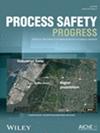Change of location class in gas pipelines from a regulatory perspective
IF 1
4区 工程技术
Q4 ENGINEERING, CHEMICAL
引用次数: 0
Abstract
Location class is an essential factor in the gas pipeline project because it considers factors such as population density and the number of buildings along the gas pipeline route. As these parameters change, the pipeline operator needs to review the location class, also requiring a possible assessment of changes in allowable pipeline operating pressure. Brazilian regulations related to the safety of pipeline processes are defined in the Onshore Pipeline Technical Regulation and this document indicates the application of the requirements of the ASME B31.8 standard for changing the location class. Although there are preventive and mitigating measures in the ASME B31.8 standard, they are seen as overly conservative. Other international standards have different concepts, with evaluation criteria based on risk analysis. The issue has also been a challenge for other countries, which are reviewing their regulations and developing guidelines for gas pipeline operators. The main objective of this study is to carry out a survey of international practices related to changing the location class of gas pipelines and to propose a criterion based on the best international practices based on risk management, allowing a more comprehensive view of this subject.从监管角度看天然气管道位置等级的变化
位置等级是天然气管道项目中的一个重要因素,因为它考虑了天然气管道沿线的人口密度和建筑物数量等因素。随着这些参数的变化,管道运营商需要对位置等级进行审查,同时还需要对管道允许工作压力的变化进行可能的评估。巴西有关管道工艺安全的法规在《陆上管道技术条例》中有明确规定,本文件说明了 ASME B31.8 标准对更改位置等级要求的应用。尽管 ASME B31.8 标准中有预防和缓解措施,但这些措施被认为过于保守。其他国际标准则有不同的概念,其评估标准以风险分析为基础。这一问题也是其他国家面临的挑战,这些国家正在审查其法规,并为天然气管道运营商制定指导方针。本研究的主要目的是调查与改变天然气管道位置等级有关的国际惯例,并根据基于风险管理的最佳国际惯例提出一个标准,以便对这一问题有一个更全面的认识。
本文章由计算机程序翻译,如有差异,请以英文原文为准。
求助全文
约1分钟内获得全文
求助全文
来源期刊

Process Safety Progress
工程技术-工程:化工
CiteScore
2.20
自引率
10.00%
发文量
99
审稿时长
6-12 weeks
期刊介绍:
Process Safety Progress covers process safety for engineering professionals. It addresses such topics as incident investigations/case histories, hazardous chemicals management, hazardous leaks prevention, risk assessment, process hazards evaluation, industrial hygiene, fire and explosion analysis, preventive maintenance, vapor cloud dispersion, and regulatory compliance, training, education, and other areas in process safety and loss prevention, including emerging concerns like plant and/or process security. Papers from the annual Loss Prevention Symposium and other AIChE safety conferences are automatically considered for publication, but unsolicited papers, particularly those addressing process safety issues in emerging technologies and industries are encouraged and evaluated equally.
 求助内容:
求助内容: 应助结果提醒方式:
应助结果提醒方式:


